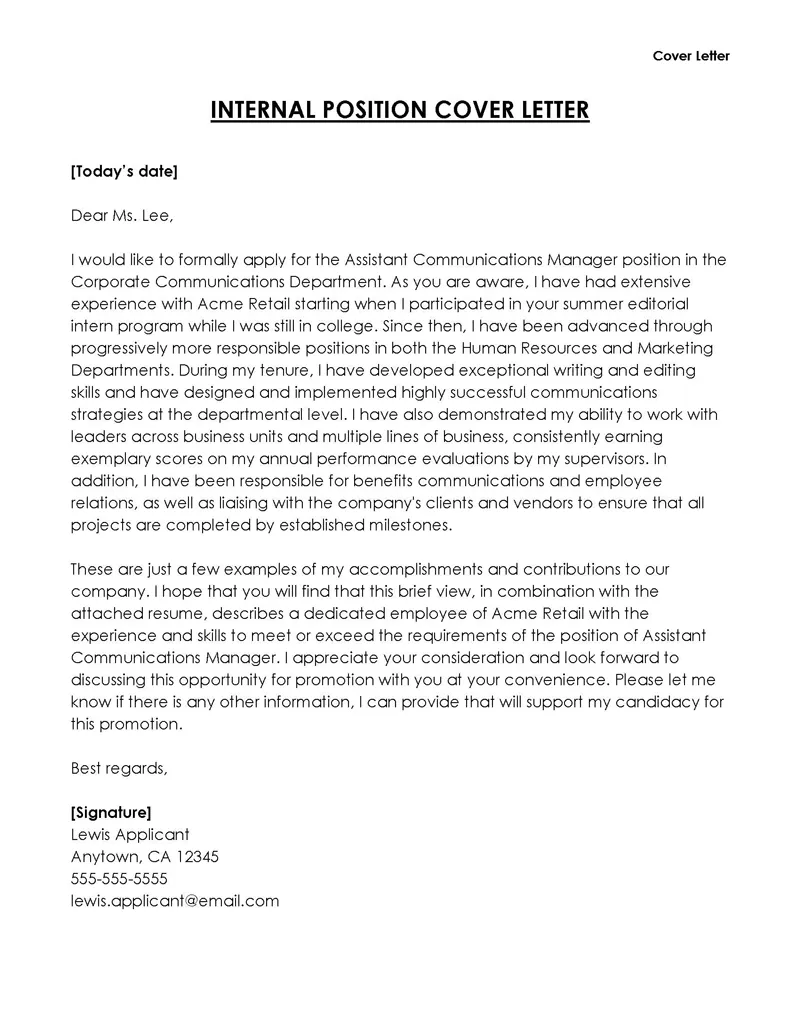Why an Internal Cover Letter is Essential
Applying for an internal position is an exciting opportunity, but it requires a different approach than external applications. An internal cover letter is your chance to showcase your understanding of the company culture and demonstrate how your skills and experience align with the new role’s requirements. It is a tailored document that highlights your existing knowledge of the company and your commitment to its success. Unlike external applications where you are largely unknown, an internal cover letter allows you to leverage your existing network and highlight your proven track record within the organization. It’s a chance to show you are not just qualified but the ideal candidate for the job.
Understanding the Internal Opportunity
Before you start writing, thoroughly understand the position’s requirements. Review the job description carefully, paying close attention to the skills, experience, and qualifications the hiring manager seeks. Consider the role’s responsibilities and how they differ from your current position. Research the department or team, their goals, and any recent projects or initiatives. Understanding the internal opportunity helps you tailor your cover letter to speak directly to the needs of the hiring manager. Identify what makes you a strong fit for the specific role, not just a general candidate.
Researching the New Role and Company Needs
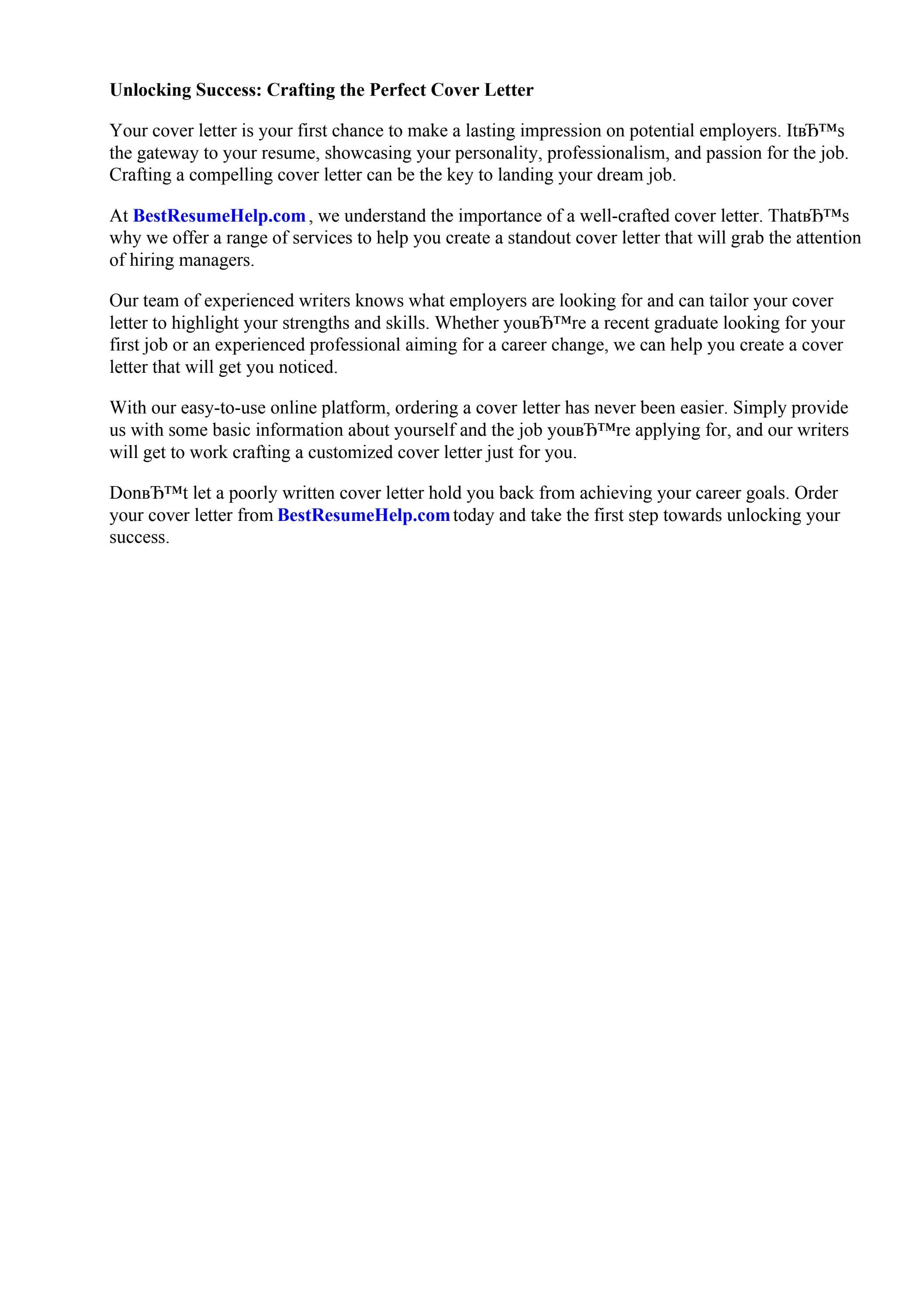
Effective research is crucial. Beyond the job description, seek additional information. If possible, talk to people currently in the role or within the department. Ask questions about their day-to-day tasks, challenges, and goals. Review company newsletters, internal communications, and project updates to stay informed about current projects and initiatives. Visit the company’s website and social media channels to gain deeper insights into its mission, values, and culture. Use this information to demonstrate your understanding of the role and how your contributions will benefit the company.
Tailoring Your Cover Letter The Basics
A generic cover letter is a guaranteed way to have your application overlooked. Tailor your internal cover letter to the specific position and the company’s needs. Start by personalizing your greeting; if possible, address the hiring manager by name. Clearly state the position you are applying for in the opening paragraph. Throughout the letter, use keywords from the job description and align your skills and experience with the role’s requirements. Show genuine enthusiasm for the position and the opportunity to contribute to the company’s success. The core principle is to connect your past experience to the future opportunity.
Highlighting Relevant Skills and Experience
Focus on the skills and experiences most relevant to the new position. Review the job description and identify the key requirements. Then, highlight the relevant skills you possess and provide specific examples from your current or previous roles that demonstrate those skills. Use action verbs to describe your accomplishments, such as “managed,” “led,” “developed,” or “implemented.” This shows the hiring manager how you have applied your skills in the past and how you can contribute to the team. Avoid generic statements; provide concrete examples that showcase your abilities and the results you achieved.
Quantifying Achievements and Contributions
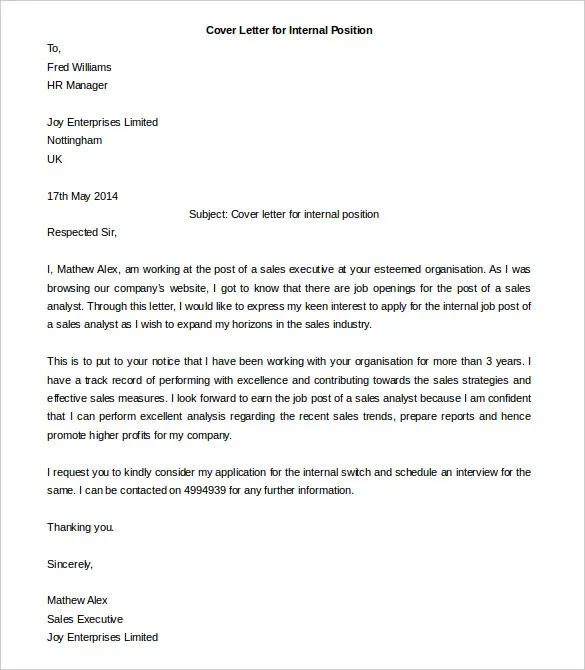
Quantify your achievements whenever possible. Instead of saying “improved customer satisfaction,” state “increased customer satisfaction scores by 15% in six months.” Quantifiable results provide concrete evidence of your abilities and make a stronger impression on the hiring manager. Use numbers, percentages, and specific metrics to demonstrate the impact of your work. This will clearly show the value you brought to your previous roles and the value you can bring to the new position. For example, if you’ve reduced costs, increased sales, or improved efficiency, provide the specific data to support your claims.
Demonstrating Alignment with Company Values
Demonstrate your understanding and alignment with the company’s values. Review the company’s mission statement, values, and culture. In your cover letter, provide examples of how you have embodied these values in your work. Show how your actions and decisions align with the company’s principles. This helps the hiring manager see that you are not just a skilled employee but also a good cultural fit. When you demonstrate that you are a proponent of the company values, the hiring manager can picture you working within the culture, helping the hiring decision.
Showcasing Your Internal Network
Leverage your internal network to your advantage. If you have worked on projects with team members in the department you are applying to, mention those collaborations. If you have a mentor or colleague who can speak to your skills and work ethic, consider asking for a recommendation. Highlighting your internal network shows you can seamlessly integrate into the team. It suggests that you are already familiar with the department’s dynamics and can quickly contribute to its goals. This internal support can often give you an edge over external candidates.
Formatting and Structure for Impact
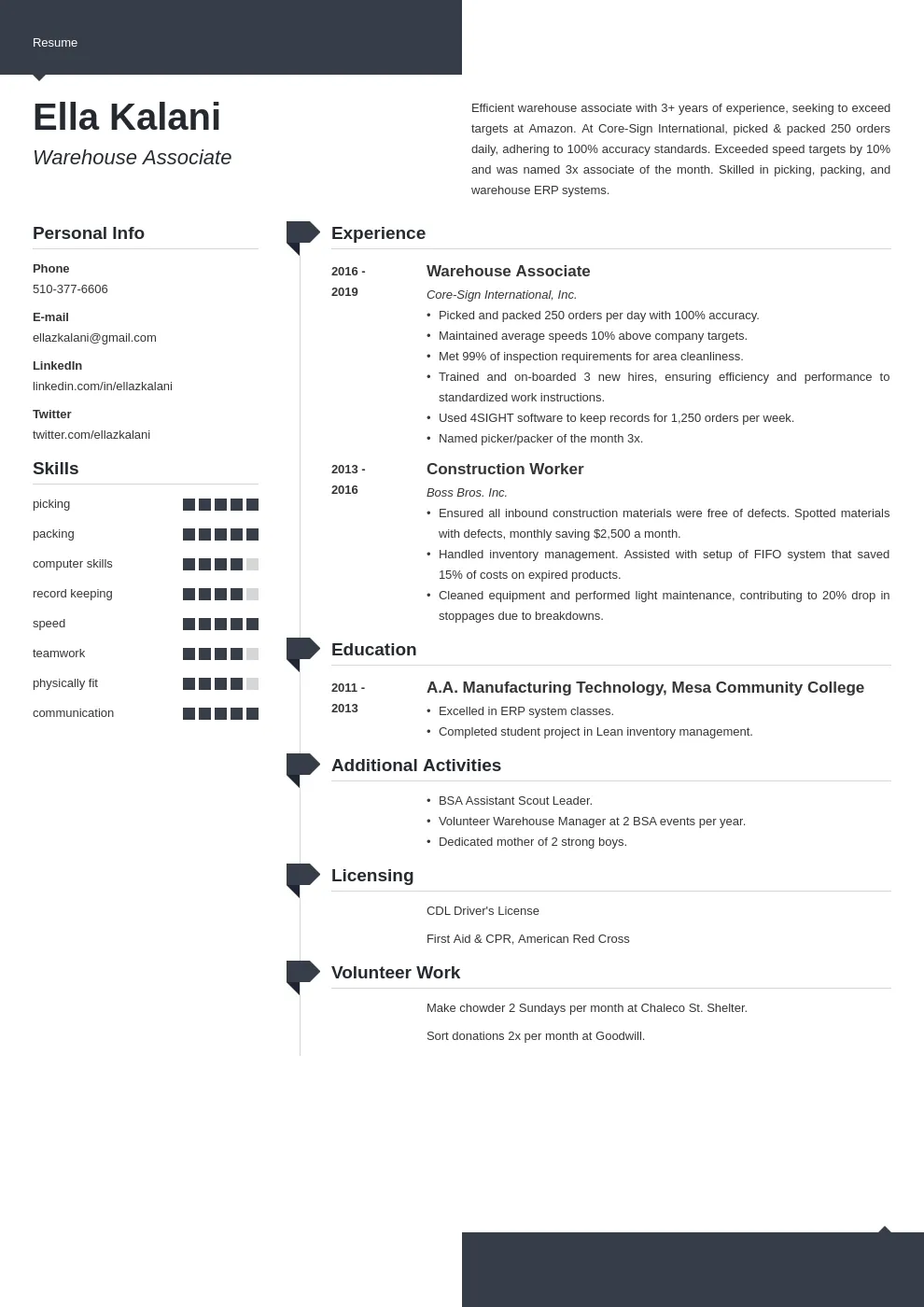
A well-formatted cover letter is easy to read and makes a positive first impression. Use a professional font, such as Times New Roman, Arial, or Calibri, and keep the font size between 10 and 12 points. Use clear headings and subheadings to organize your content and make it scannable. Use bullet points to highlight your key accomplishments and skills. Keep your paragraphs concise and avoid long blocks of text. Ensure your cover letter is free of grammatical errors and typos. The appearance of your letter shows the hiring manager your professionalism and attention to detail.
Crafting a Compelling Opening
The opening paragraph is your opportunity to grab the hiring manager’s attention. State the position you are applying for and briefly mention your current role or department. Express your enthusiasm for the opportunity and highlight why you are a strong candidate. If you have been internally recommended, mention that in the opening paragraph. Consider briefly mentioning a key achievement that directly relates to the role’s requirements. The opening should give the reader a clear understanding of your intent and create an immediate positive impression.
Developing Strong Body Paragraphs
The body paragraphs are where you showcase your skills and experience. Use these paragraphs to provide specific examples of your accomplishments and how they relate to the job requirements. Structure each paragraph around a key skill or accomplishment. Use the STAR method (Situation, Task, Action, Result) to describe your experiences. The STAR method will give the hiring manager a clear and concise understanding of your accomplishments. Use strong action verbs and avoid jargon. Be sure that the body paragraphs clearly convey your qualifications and how you have contributed to the organization.
Writing a Powerful Closing Statement
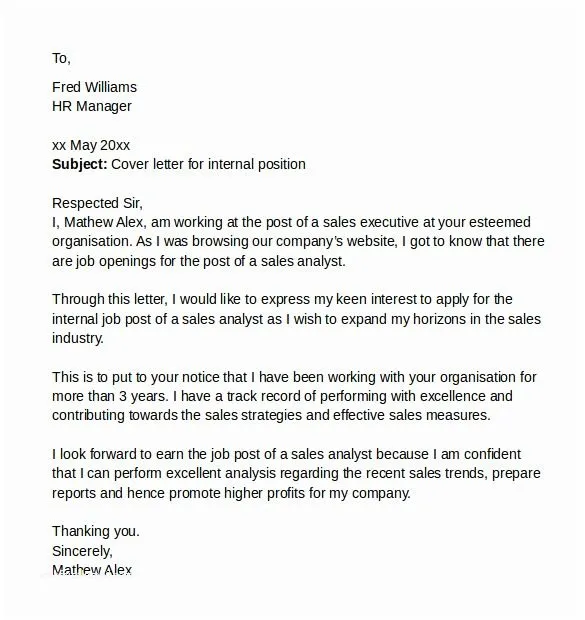
The closing paragraph should reiterate your interest in the position and express your confidence in your ability to contribute to the company’s success. Thank the hiring manager for their time and consideration. Reiterate your desire for an interview. Include a call to action, such as, “I look forward to discussing my qualifications further.” Avoid clichés and generic phrases. End with a professional closing, such as “Sincerely” or “Best regards,” followed by your name. A powerful closing statement reinforces your key qualifications and leaves a positive lasting impression.
Proofreading and Editing Your Cover Letter
Proofread and edit your cover letter multiple times to ensure it is free of errors. Check for grammatical mistakes, spelling errors, and typos. Have a colleague or mentor review your cover letter for clarity, conciseness, and overall effectiveness. Even small errors can undermine your credibility. It’s wise to read the letter aloud, as this can help you identify awkward phrasing or sentences that don’t flow well. Ensure your cover letter is polished and professional before submitting it. Proper editing significantly increases your chances of making a strong impression.
Seeking Feedback and Refining Your Draft
Seek feedback from trusted colleagues, mentors, or career advisors. Ask them to review your cover letter and provide constructive criticism. They can offer fresh perspectives on your skills and how you present them. Ask for feedback on your overall message, the clarity of your writing, and whether your accomplishments are well-articulated. Use the feedback to refine your draft and make improvements. Be open to criticism, and use the suggestions to strengthen your cover letter. The process of seeking and incorporating feedback will ensure your cover letter is the best it can be.
Examples of Effective Internal Cover Letters
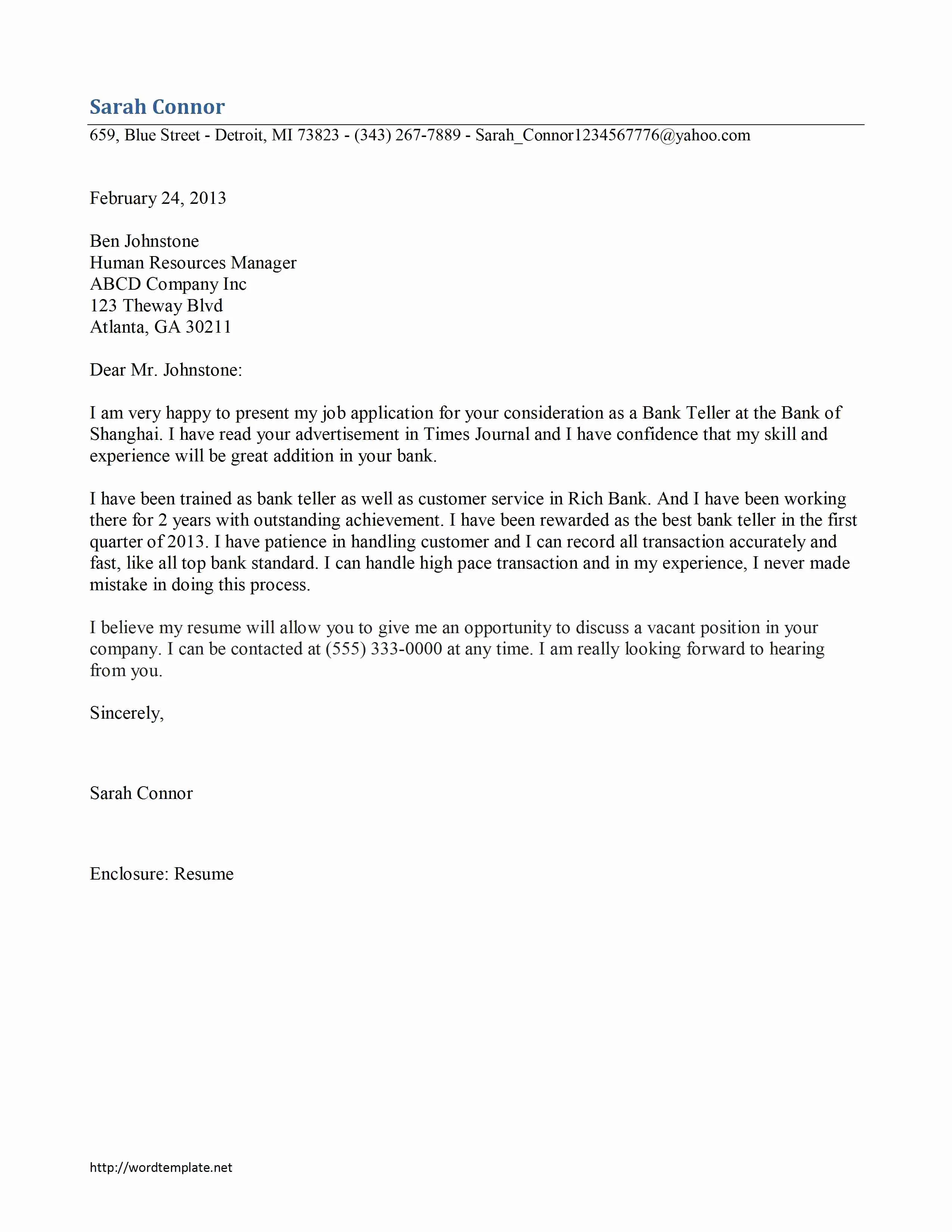
Review examples of effective internal cover letters. Many online resources and career websites provide templates and examples. Pay attention to how the cover letters are structured, the language they use, and the types of achievements they highlight. Adapt these examples to your situation while ensuring your cover letter is original and authentic. Focus on the elements that make the examples effective and apply those principles to your own cover letter. By reviewing these examples, you can gain valuable insight and increase your chances of writing a successful internal cover letter.
